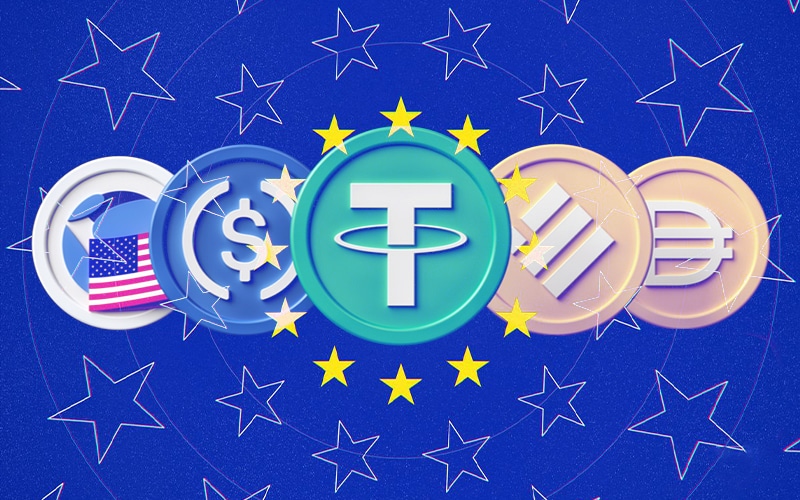The European Union (EU) might ban dollar-pegged stablecoins if the new Markets in Crypto-Assets (MiCA) legislation enters into force in its current form. Though the European Union’s landmark crypto law has already been approved, some technicalities are yet to be resolved.
Blockchain for Europe and the Digital Euro Association wrote in a letter to the EU Council in an effort to reverse controversial rules which could effectively put an end to any stablecoin projects linked to anything but the euro.
The crypto industry states that MiCA imposes restrictions on the use and issuance of stablecoins that aren’t denominated in euros or other official currency of an EU Member State.
These rules could potentially ban Circle’s USD coin, Tether’s USDT, and Binance’s binance USD, which account for a significant amount of crypto trade volumes globally.
Both the association also mentioned in the letter that the three largest stablecoins by trade volume are at risk of being banned in the EU from 2024. The ban would be due to quantitative limits on the issuance and usage of EMTs (e-money tokens) denominated in foreign currency under MiCA.
Additionally, limiting their use in the Euro zone would force the local cryptocurrency markets to collapse, which might have destabilizing implications and result in a significant outflow of crypto activities outside of the EU, claims both the associations.
If MiCA is enforced as it is, then there could be extreme short-term volatility in prices caused by dislocation effects coupled with higher prices and lower competition in the developing crypto industry. The results would eventually drag down innovation, they argued.
Both associations seek clarification from the legislator, demanding any limitation on foreign currencies should be very narrow in space. To protect the role of USD-referencing stablecoins, they have also urged precise definitions for “uses as a means of exchange” under MiCA.
While the EU is planning to ban stablecoin, the UK crypto industry welcomed new stablecoin rules that could bring crypto assets like stablecoins into the scope of local payments regulation.






